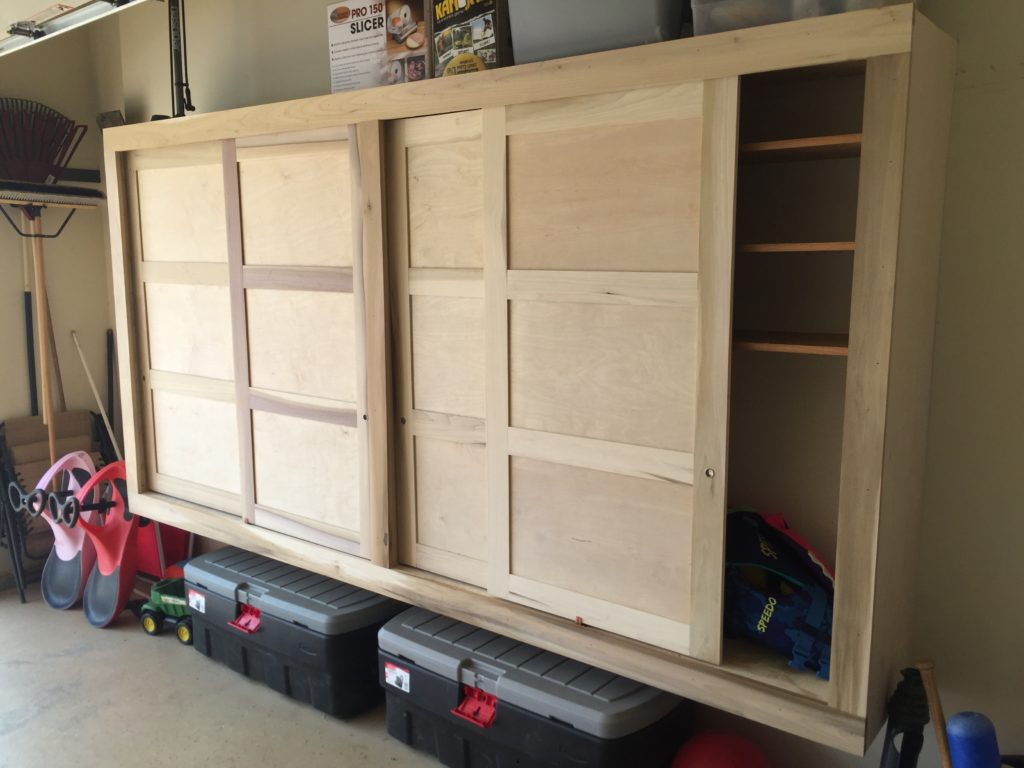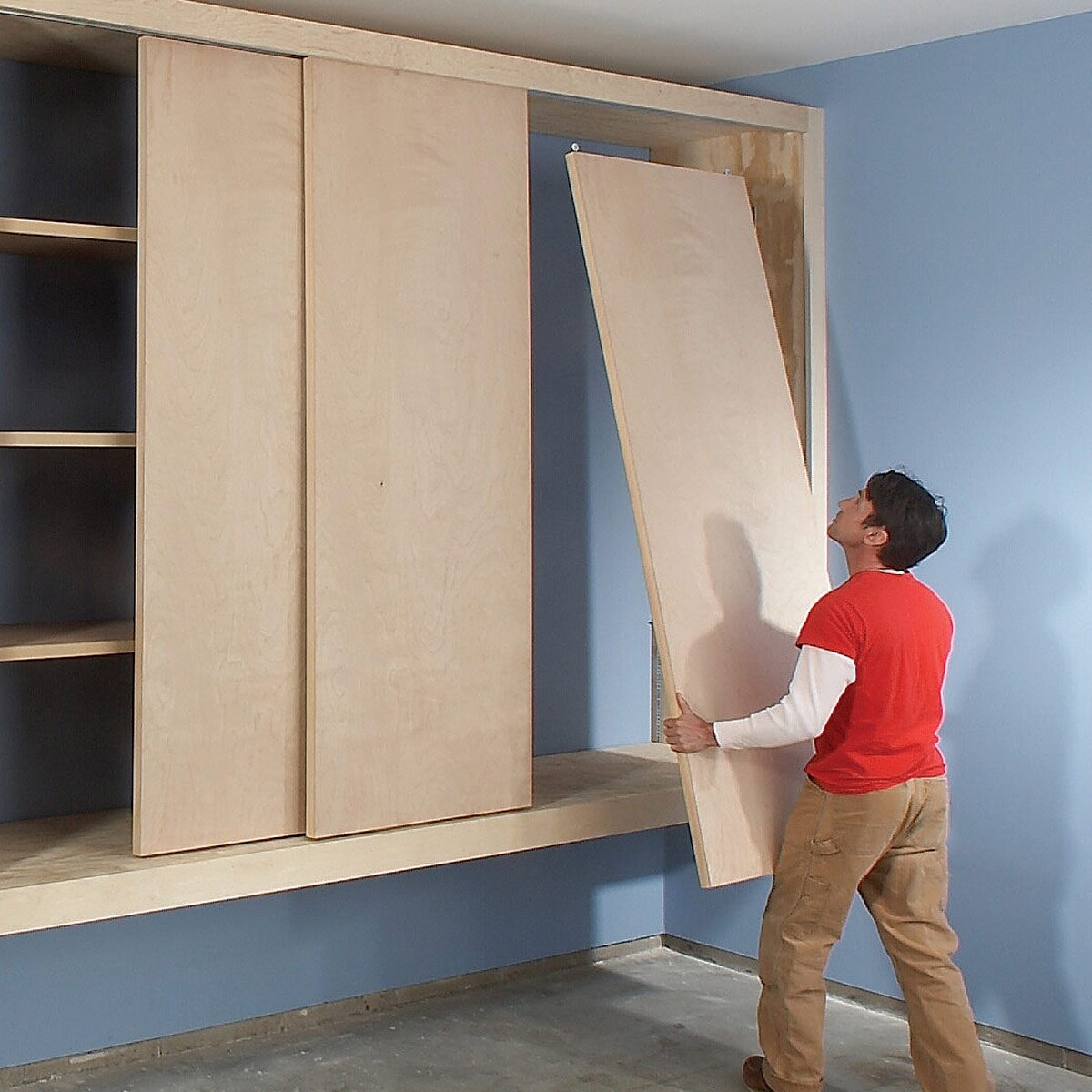Planning and Design

Creating a DIY sliding door cabinet involves careful planning and design to ensure a functional and aesthetically pleasing outcome. This section delves into the key considerations and steps involved in designing your custom cabinet.
Types of Sliding Door Cabinets
Sliding door cabinets offer a range of styles and functionalities to suit various needs. Here are some common types:
- Bypass Sliding Doors: These doors slide past each other on a track, offering a space-saving solution for closets and pantries. They are ideal for maximizing storage space in narrow areas.
- Pocket Sliding Doors: These doors slide into a pocket within the wall, completely disappearing when open. This option is perfect for maximizing floor space and creating a sleek, minimalist aesthetic.
- Barn Door Cabinets: Inspired by traditional barn doors, these cabinets feature a single sliding door that moves along a track mounted to the wall. They add a rustic and modern touch to any space.
- Stacked Sliding Doors: These cabinets utilize multiple sliding doors that stack on top of each other. They are suitable for large storage areas and allow for easy access to different sections.
Factors to Consider
Before embarking on your DIY project, consider these factors:
- Space Limitations: Measure the available space carefully, considering the cabinet’s depth, width, and height. Ensure there is sufficient clearance for the sliding doors to operate smoothly.
- Desired Functionality: Determine the purpose of the cabinet, such as storage for clothes, tools, or kitchen supplies. This will help you choose the appropriate size, shelf configuration, and hardware.
- Materials: Consider the type of wood, hardware, and finishing supplies that align with your budget and aesthetic preferences.
Designing the Cabinet
Designing your sliding door cabinet involves determining the dimensions, door track placement, and hardware selection.
- Dimensions: Measure the space where you intend to install the cabinet. Determine the desired height, width, and depth. Consider the thickness of the materials and the desired interior layout.
- Door Track Placement: Decide on the placement of the door track. For bypass doors, the track is typically mounted above the cabinet. For pocket doors, the track is installed within the wall.
- Hardware Selection: Choose appropriate hardware, including door tracks, rollers, handles, and hinges. Consider the weight of the doors and the desired level of functionality.
Materials Needed
Gather the necessary materials before starting your project:
- Wood: Choose a sturdy wood type like plywood, MDF, or solid wood, depending on your budget and desired finish.
- Hardware: This includes door tracks, rollers, handles, hinges, and fasteners. Select hardware that is compatible with the chosen wood type and door weight.
- Finishing Supplies: This includes paint, stain, varnish, primer, and sanding materials. Choose finishing supplies that align with your desired aesthetic.
Construction: Diy Sliding Door Cabinet

The construction phase is where the design takes shape, transforming your vision into a tangible piece of furniture. This section guides you through the process of building the cabinet frame, installing the sliding door track system, constructing sturdy shelves and drawers, and finally, installing the sliding doors.
Assembling the Cabinet Frame, Diy sliding door cabinet
This step involves cutting the wood for the frame and assembling it. The frame is the foundation of your cabinet, providing structural integrity and support for the shelves, drawers, and doors.
“Precise cuts and strong joints are crucial for a durable and aesthetically pleasing cabinet.”
- Cut the wood for the frame according to your design specifications. Use a miter saw or table saw for accurate cuts. Ensure that all sides are cut to the same length and that the corners are perfectly square.
- Join the frame pieces using wood glue and screws. For added strength, consider using pocket holes or dowel joints.
- Secure the frame to the floor or wall using brackets or anchors to ensure stability.
Installing the Sliding Door Track System
The sliding door track system is responsible for smooth and effortless door operation. A properly installed track ensures that the doors move freely and silently.
- Select a track system that suits the weight and size of your doors. Consider using a track with ball bearings for smoother operation.
- Mount the track to the top of the cabinet frame, ensuring that it is perfectly level. Use a level to verify alignment.
- Install the door rollers onto the doors, ensuring that they are properly aligned with the track. Test the movement of the doors to ensure they slide smoothly.
Building Shelves and Drawers
Shelves and drawers provide storage space within the cabinet. Their construction should prioritize strength and stability to withstand the weight of your belongings.
- Cut the wood for the shelves and drawer boxes to the desired dimensions. Use plywood or MDF for sturdy and durable construction.
- Assemble the shelves and drawers using glue and screws. Ensure that the joints are strong and secure.
- Install the shelves and drawers into the cabinet, ensuring that they are securely attached to the frame. Consider using shelf supports or drawer slides for added stability.
Installing the Sliding Doors
The final step involves installing the sliding doors, ensuring that they are aligned with the track and operate smoothly.
- Attach the sliding doors to the rollers, ensuring that they are properly aligned with the track.
- Adjust the rollers to ensure that the doors slide smoothly and without any resistance. You can use a screwdriver to adjust the height and alignment of the rollers.
- Install door handles and other hardware, ensuring that they are securely attached. Test the movement of the doors to ensure that they operate smoothly and without any issues.
Finishing Touches

The final stage of your DIY sliding door cabinet project is adding the finishing touches, which will determine its aesthetic appeal and durability. This involves selecting the right finishing options, preparing the cabinet surface, and applying the finish with precision.
Choosing Finishing Options
The finishing options you choose will depend on the desired look and the type of wood used.
- Painting: Painting provides a versatile and durable finish, offering a wide range of colors and finishes, from matte to glossy. It can effectively hide imperfections and provide a clean, modern look. You can use latex or oil-based paints, each with its own characteristics and drying times.
- Staining: Staining enhances the natural beauty of the wood by adding color and depth. Stains come in various colors and shades, allowing you to customize the look. Oil-based stains penetrate the wood deeply, providing a rich, even finish, while water-based stains are easier to clean up but may not penetrate as deeply.
- Protective Coatings: Protective coatings are essential for safeguarding the cabinet from wear and tear, moisture, and UV damage. Common options include:
- Polyurethane: A durable and water-resistant coating that provides a glossy finish. It is available in both oil-based and water-based formulations.
- Lacquer: A fast-drying, hard coating that provides a durable, glossy finish. It is often used for furniture and other items that require a high-gloss look.
- Varnish: A transparent coating that protects the wood while preserving its natural beauty. It is available in various finishes, from matte to gloss.
Preparing the Cabinet for Finishing
Proper preparation is crucial for achieving a smooth, even finish.
- Sanding: Sanding removes any rough edges, imperfections, and dust particles from the cabinet’s surface. Start with coarse-grit sandpaper to remove any major imperfections and gradually work your way up to finer grits for a smooth finish. Sanding with the grain of the wood will create a more even surface and prevent scratches.
- Priming: Priming creates a smooth, uniform surface that helps the paint or stain adhere better. Primer also seals the wood, preventing the stain from soaking in unevenly and creating blotchy areas. Use a primer that is compatible with the finish you plan to apply.
Achieving a Professional Finish
To create a professional-looking finish, follow these tips:
- Apply thin, even coats: Avoid applying thick coats, as they may run or drip. Apply thin, even coats and allow each coat to dry completely before applying the next.
- Use a high-quality brush or sprayer: A high-quality brush or sprayer will help you apply the finish evenly and smoothly. Choose a brush or sprayer that is appropriate for the type of finish you are using.
- Work in a well-ventilated area: Many finishes release fumes, so it is essential to work in a well-ventilated area. Wear a respirator mask to protect yourself from inhaling harmful fumes.
- Clean up immediately after finishing: Clean up any spills or drips immediately to prevent them from drying and becoming difficult to remove. Use the appropriate cleaning solution for the type of finish you are using.
Optional Accessories and Embellishments
Enhance the cabinet’s appearance and functionality with optional accessories and embellishments:
- Hardware: Choose stylish and functional handles, knobs, and hinges that complement the cabinet’s design.
- Lighting: Add lighting inside the cabinet to illuminate its contents and create a dramatic effect.
- Molding: Molding can add decorative accents and enhance the cabinet’s visual appeal.
- Decorative Glass: Use decorative glass panels for the doors to add privacy and visual interest.
Diy sliding door cabinet – The whisper of sliding doors, a gentle symphony of smooth movement, can bring a touch of Zen to any room. For those seeking a more refined aesthetic, the zenith wood wall cabinet white offers a timeless elegance, its clean lines and crisp white finish complementing any décor.
This minimalist approach, mirrored in the sliding doors of a DIY cabinet, allows for a sense of order and tranquility, transforming your space into a sanctuary of calm.
A DIY sliding door cabinet, crafted with care, can add a touch of elegance to any space. But to ensure its beauty endures, the cherry wood requires tender attention. Discover the secrets of cleaning cherry wood kitchen cabinets to keep your creation radiant for years to come.
With proper care, your sliding door cabinet will become a cherished piece, adding both functionality and charm to your home.
